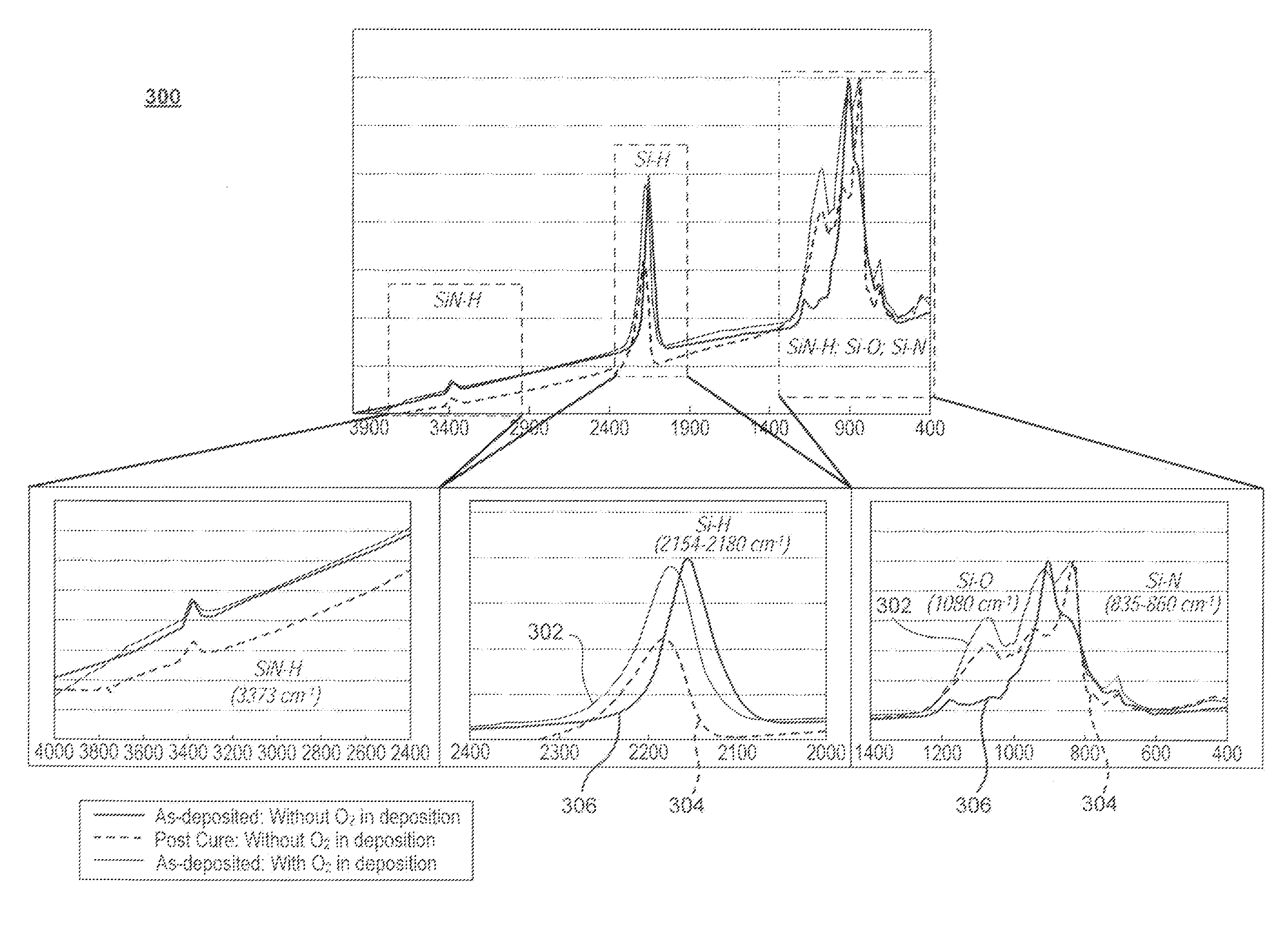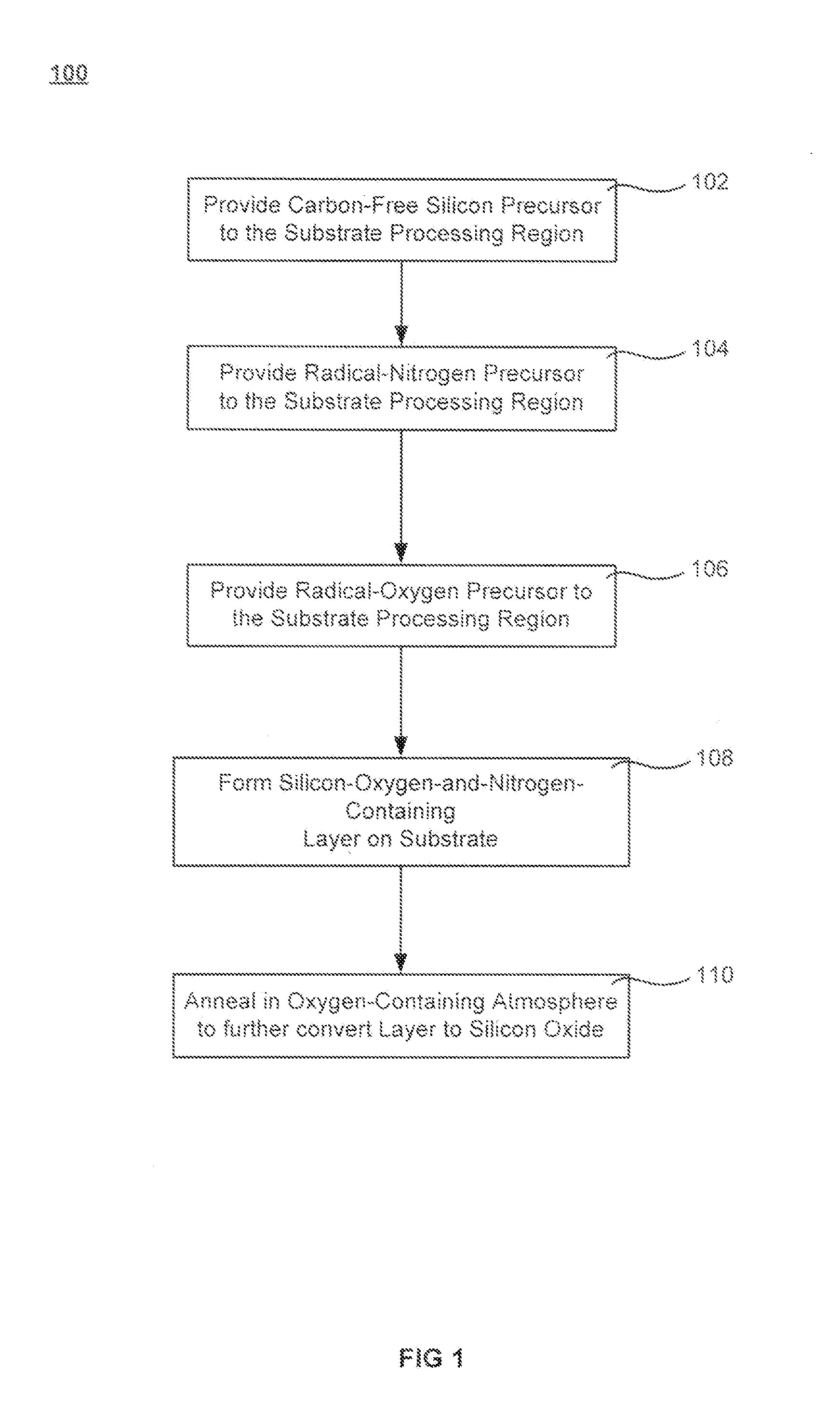Oxygen-doping for non-carbon radical-component CVD films
a technology of non-carbon radicals and cvd films, applied in the direction of chemical vapor deposition coatings, coatings, plasma techniques, etc., can solve the problems of dielectric materials, dielectric materials, and structural features of devices having decreased spatial dimensions, so as to increase the oxygen-content and reduce the nitrogen-content
- Summary
- Abstract
- Description
- Claims
- Application Information
AI Technical Summary
Benefits of technology
Problems solved by technology
Method used
Image
Examples
Embodiment Construction
[0016]Methods of forming silicon oxide layers are described. The methods include the steps of concurrently combining both a radical precursor and a radical-oxygen precursor with a carbon-free silicon-containing precursor. One of the radical precursor and the silicon-containing precursor contain nitrogen. The methods result in depositing a silicon-oxygen-and-nitrogen-containing layer on a substrate. The oxygen content of the silicon-oxygen-and-nitrogen-containing layer is then increased to form a silicon oxide layer which may contain very little nitrogen. The radical-oxygen precursor and the radical precursor may be produced in separate plasmas or the same plasma. The increase in oxygen content may be brought about by annealing the layer in the presence of an oxygen-containing atmosphere and the density of the film may be increased further by raising the temperature even higher in an inert environment.
[0017]Without binding the coverage of the claims to hypothetical mechanisms which m...
PUM
| Property | Measurement | Unit |
|---|---|---|
| temperature | aaaaa | aaaaa |
| temperature | aaaaa | aaaaa |
| width | aaaaa | aaaaa |
Abstract
Description
Claims
Application Information
 Login to View More
Login to View More - R&D
- Intellectual Property
- Life Sciences
- Materials
- Tech Scout
- Unparalleled Data Quality
- Higher Quality Content
- 60% Fewer Hallucinations
Browse by: Latest US Patents, China's latest patents, Technical Efficacy Thesaurus, Application Domain, Technology Topic, Popular Technical Reports.
© 2025 PatSnap. All rights reserved.Legal|Privacy policy|Modern Slavery Act Transparency Statement|Sitemap|About US| Contact US: help@patsnap.com



